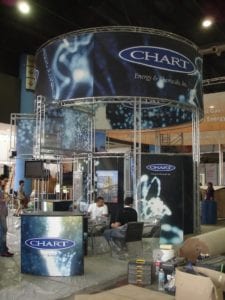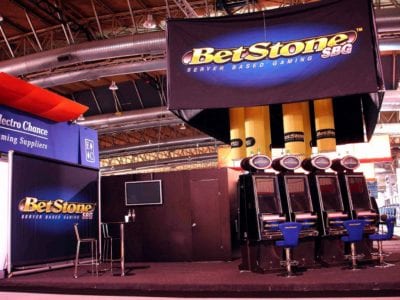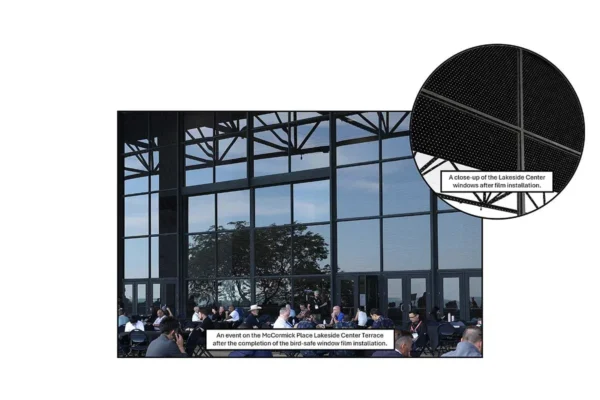 According to the most recent research of UFI, the Global Association of the Exhibition Industry, optimism is flying high in the trade show world, and nowhere is that optimism more buoyant than Latin America. Nations from Mexico to Argentina are emerging as important destinations for global exhibitions, and many trade show managers in the United States are for the first time contemplating heading south to take part.
According to the most recent research of UFI, the Global Association of the Exhibition Industry, optimism is flying high in the trade show world, and nowhere is that optimism more buoyant than Latin America. Nations from Mexico to Argentina are emerging as important destinations for global exhibitions, and many trade show managers in the United States are for the first time contemplating heading south to take part.
Consider this: There are more than 6,600 Latin American trade fairs registered on nTradeshows.com – a compendium of global trade shows – and while many are small consumer shows, a significant number are on par with large international events that Europe used to corner the market on a decade ago. With major metropolitan areas such as those found in Mexico City and Sao Paolo, Mexico and Brazil are the most established Latin American countries in the exhibition industry. But now smaller neighbors such as Columbia, Chile, Uruguay, and Panama are coming into their own with organizers and venues competing for larger and larger slices of the trade show pie.
So sturdy is the industry in Brazil that 90 percent of organizers surveyed by UFI said they expect their profits to increase during the coming year. In Mexico, 86 percent of organizers said they expect increased profits by year’s end. Views were more conservative in the remainder of Central and South America, with just 43 percent overall saying they believe increased revenue is on the horizon. Even so, 60 percent reported increases in their operating profits in 2016 and another 30 percent said their profits held steady with the year before – a success rate that outpaced Germany, Italy, the United Kingdom, South Africa, the Middle East, China, and the United States.
The burgeoning success of Latin American trade show markets is not without its threats, however. In Mexico particularly, 60 percent of organizers surveyed say they expect some negative impact to come from the current political landscape. With the relationship of Mexico and the United States hanging in the balance of President Donald Trump’s promised border wall, another 20 percent say they just don’t know what will happen. Thirteen percent say they anticipate a significant positive impact to come from changing world politics, though researchers note that the question was framed not only around the U.S. presidential election but also the United Kingdom’s “Brexit” vote and a failed coup attempt in Turkey.
 Though farther removed from any direct political conflict with the United States, 45 percent of Brazilian organizers said they expect some limited negative impacts due to recent political developments, and 18 percent said they are not sure what will happen. Uncertainty in the remainder of Central and South America was far greater, with just 8 percent saying they expected some negative impact and 58 percent saying they were not sure what was to come.
Though farther removed from any direct political conflict with the United States, 45 percent of Brazilian organizers said they expect some limited negative impacts due to recent political developments, and 18 percent said they are not sure what will happen. Uncertainty in the remainder of Central and South America was far greater, with just 8 percent saying they expected some negative impact and 58 percent saying they were not sure what was to come.
If the relationship between the United States and Mexico sours, the impact could be that Mexico reacts by limiting U.S. access to its trade shows, some in the industry speculate, or by tightening its borders to the point that bringing in exhibition materials to participate in events becomes inordinately difficult. At present, Mexico is widely considered the easiest place to exhibit when compared to other Latin American countries, primarily because the government has a well-established exhibition industry with import rules in place to facilitate access to the country by visiting exhibitors. And because that access plays a large part in a nation’s success attracting international clientele, many in the industry are keeping a watchful eye on U.S./Mexico political developments as they evolve over the coming weeks and months.
As anyone who has tried to ship goods to Brazil for a trade show will attest, tightened restrictions bring some significant headaches to international exhibiting. Tales of shipments sitting in customs at a Brazil port well past the date of an exhibition are common because the documentation requirements are extreme and the smallest error can grind the process to a halt. Sometimes a shipment gets delayed in customs even when paperwork is completed meticulously, and for that reason, many trade show experts in Latin America advise international clients to obtain everything possible in the country. Besides, said Adriana Macedo, director at the Sao Paolo-based exhibit house Upwards Stands, shipments to Brazil plus the customs process take an inordinate amount of time and are extremely expensive, making a build-and-burn or rental exhibit more cost effective and less trouble in the long run.
At a minimum, Macedo said, exhibitors must use the services of experts to navigate clearing customs for any shipped items. In fact, local experts are likely the key to success for all aspects of exhibiting, she said. “It is better to have a local stand builder who takes care of 100 percent of the local services,” Macedo said, “because U.S. exhibitors who are not familiar with local prices will almost certainly pay too much for them when negotiating on their own.”
 While it is universally agreed that Brazil is the most difficult country to clear customs in and Mexico is the easiest, it bears mentioning that among the 20 countries and six dependent territories that make up Latin America, the rules that affect exhibitors are not the same in any two places. “Prepare to deal with different customs process in different countries throughout Latin America,” said Bernardo Szulanski, at right, president of QUIKEN – an Argentinian exhibit house – and author of Generando Negocios (Generating Business), a book that focuses on how to participate productively in Latin American exhibitions. Brazil is the most challenging country to exhibit in, Szulanski said, followed by Argentina, particularly because the country has an ever-changing set of import rules. Mexico, Uruguay and Chile are among the easiest. “As a rule of thumb,” he said, “the higher a country’s import duty rates are, the more difficult it will be clear customs. Conversely, the lower a country’s duty rates, the less difficult the customs process is.”
While it is universally agreed that Brazil is the most difficult country to clear customs in and Mexico is the easiest, it bears mentioning that among the 20 countries and six dependent territories that make up Latin America, the rules that affect exhibitors are not the same in any two places. “Prepare to deal with different customs process in different countries throughout Latin America,” said Bernardo Szulanski, at right, president of QUIKEN – an Argentinian exhibit house – and author of Generando Negocios (Generating Business), a book that focuses on how to participate productively in Latin American exhibitions. Brazil is the most challenging country to exhibit in, Szulanski said, followed by Argentina, particularly because the country has an ever-changing set of import rules. Mexico, Uruguay and Chile are among the easiest. “As a rule of thumb,” he said, “the higher a country’s import duty rates are, the more difficult it will be clear customs. Conversely, the lower a country’s duty rates, the less difficult the customs process is.”
Complicating the logistics of getting materials to a show is the fact that, in many cases, exhibitors need multiple modes of transportation including ships, planes, trains, trucks, or all of the above, said Szulanski. That is particularly true in larger or long countries such as Mexico, Brazil, Argentina, Columbia, and Chile.
Exhibitors are not likely to be charged drayage anywhere in Latin America, but they are also likely to never see their shipment again if they send their goods to the venue, said Anne Madrid, the international director at Mexico City-based Gpo DISplay. “Never send anything directly to the show floor because there is nobody there to receive anything,” she explained.
Madrid and Szulanski both agree with Macedo that local partners are key to a positive exhibiting experience throughout Latin America. The materials, work practices, customs, and business expectations are different, and understanding the nuances of those differences from one country to the next will be difficult for someone from outside of the region.
For example, in interpersonal dealings, introductions are more formal in Chile, Ecuador, and Columbia than in other Latin American countries, Madrid said, while having a beautiful girl serving as a hostess in the exhibit is more highly regarded in Venezuela. Macedo believes it is easier to find a large number of qualified contractors in Brazil, Argentina, and Chile than it is in other countries. Spanish is the predominate language in most of Latin America, but in Brazil, Szulanski said, the prevalent language is Portuguese.
 But there are other things that are universally true throughout Latin America. One commonality is that this culture as a whole requires less personal space than what is common in the United States. But while colleagues hug, kiss on the cheek, casually touch one another during a conversation, and are generally more emotionally expressive, it would be wrong to mistake that behavior as casual. Formality and decorum are extremely important in Latin American society, Madrid explained, and visitors are advised to study proper etiquette if they plan to interact with Latinos. Macedo agrees. “To use your hands to eat is considered highly disgusting in Brazil,” she said, “even for sandwiches and pizza.” Likewise, burping is out, but alcohol, even at lunch, is usually in. “No matter the income level,” Madrid said, “a person is expected to know how to eat properly and carry himself in a way that shows class. In business, this becomes even more important since a lot of the interactions are around a dining table.”
But there are other things that are universally true throughout Latin America. One commonality is that this culture as a whole requires less personal space than what is common in the United States. But while colleagues hug, kiss on the cheek, casually touch one another during a conversation, and are generally more emotionally expressive, it would be wrong to mistake that behavior as casual. Formality and decorum are extremely important in Latin American society, Madrid explained, and visitors are advised to study proper etiquette if they plan to interact with Latinos. Macedo agrees. “To use your hands to eat is considered highly disgusting in Brazil,” she said, “even for sandwiches and pizza.” Likewise, burping is out, but alcohol, even at lunch, is usually in. “No matter the income level,” Madrid said, “a person is expected to know how to eat properly and carry himself in a way that shows class. In business, this becomes even more important since a lot of the interactions are around a dining table.”
The reason meals are intertwined so heavily in business is two-fold. Practically speaking, most venues don’t have spaces for hospitality suites away from the show floor, so entertaining must be done in a restaurant setting. But also, breaking bread together is considered one of the integral components of building the relationship needed to do business. Those meals can go on for hours, though this setting can also be where deals are closed if an exhibitor handles the relationship correctly.
Because a prerequisite for business is a personal relationship, Szulanski explained, things like sharing meals, drinks, or small talk about topics such as a person’s family or hobbies are crucial. “People in Latin America are more emotionally involved with clients than in the U.S.” he said. “They express more emotions through their body language and involve their family in social events with their clients. It is a mistake to try to talk about business too soon.”
“Latin Americans do business with people; Americans do business with companies,” Madrid said. “If you want to do business, you need to devote time to knowing the person you are dealing with on a more personal level. They need to know and trust their business counterparts. If there is no connection or affinity, the deal may be off.”
 But even when getting chummy with potential clients, know your station, experts advise, and dress the part. “In Latin America,” said Madrid, “you can tell if a person is at a managerial level by how they dress. The higher the job title, the more dressed up the person will be. For men this means wearing a suit with a vest if at an executive level. A lower level executive may wear a suit, and a manager will wear a shirt and tie. Non-managers will adopt the business-casual look.” Women have more latitude in their manner of dress, Madrid said, but they will often wear tailored suits and dresses. In areas where it is exceptionally hot, executives will sometimes go without ties, but no one ever dresses casually enough to wear jeans in a trade show environment.
But even when getting chummy with potential clients, know your station, experts advise, and dress the part. “In Latin America,” said Madrid, “you can tell if a person is at a managerial level by how they dress. The higher the job title, the more dressed up the person will be. For men this means wearing a suit with a vest if at an executive level. A lower level executive may wear a suit, and a manager will wear a shirt and tie. Non-managers will adopt the business-casual look.” Women have more latitude in their manner of dress, Madrid said, but they will often wear tailored suits and dresses. In areas where it is exceptionally hot, executives will sometimes go without ties, but no one ever dresses casually enough to wear jeans in a trade show environment.
Executives should be addressed formally, and they should receive a nicer gift than the subordinates who visit an exhibit with them. And they will most likely have lower level people with them, Madrid said, because decision making nearly always involves a group process.
When it comes to preparing to exhibit and working at a show, there are a few other universal similarities among Latin American countries that are significantly different than operating procedures in the United States.
Show floors are not well secured, Szulanski said, particularly during setup and tear down, and things can easily walk away from a display in the bedlam of install or dismantle. For that reason, he advises an exhibitor have someone whose job specifically is to oversee those processes. Also, he said, hiring security to watch over valuable items in a display is always a good idea.
Materials requested by an exhibitor for an exhibit may not be available or may come at an exorbitant cost, Macedo said. In addition, quality standards for workmanship or finishes may be different than what an exhibitor is expecting. As such, exhibitors should be prepared to consider substitutions, have product samples sent to them, and communicate heavily about design specifications in order to ensure they will be happy with the final product.
In-booth hospitality is an elaborate affair, typically featuring alcohol, canapes, sandwiches, and even hot meals.
Graphics will need to be translated into Spanish or, in Brazil, Portuguese, but this translation should be done by a native speaker of the local language who can spot misuses of words or offensive language, as there are variations throughout the region.
It is a haggling society, and vendors will likely expect you to ask for deals when arranging for your show needs. By the same token, potential clients who are Latino will not be shy about asking for a deal when they are contemplating business with you.
And, finally, time is relative in Latin America, more of a ballpark than anything. That may result in meetings starting an ending late, meals lasting much longer than ordinary in the United States, or show floor hours that vary slightly. “The ‘time is money’ concept does not apply in Latin America,” said Madrid. “They are very laid back when it comes to time. It’s not a disrespect towards other people, it’s simply how people are. Latin Americans do not share the same sense of urgency as their U.S. counterparts. Your sales staff will have to slow down.”
While slowing down may help the sales funnel along, it also might cultivate some Latin American expertise on your team, and if UFI’s research is correct, you’re going to need it. New exhibition venues are springing across Latin America up in places like Panama City, Panama, and San Jose, Costa Rica, and nearly 100 percent of survey respondents say they are working on new activities for the trade show and event industry. Considering that, it would seem Latin America has good reason for its boundless optimism.






























